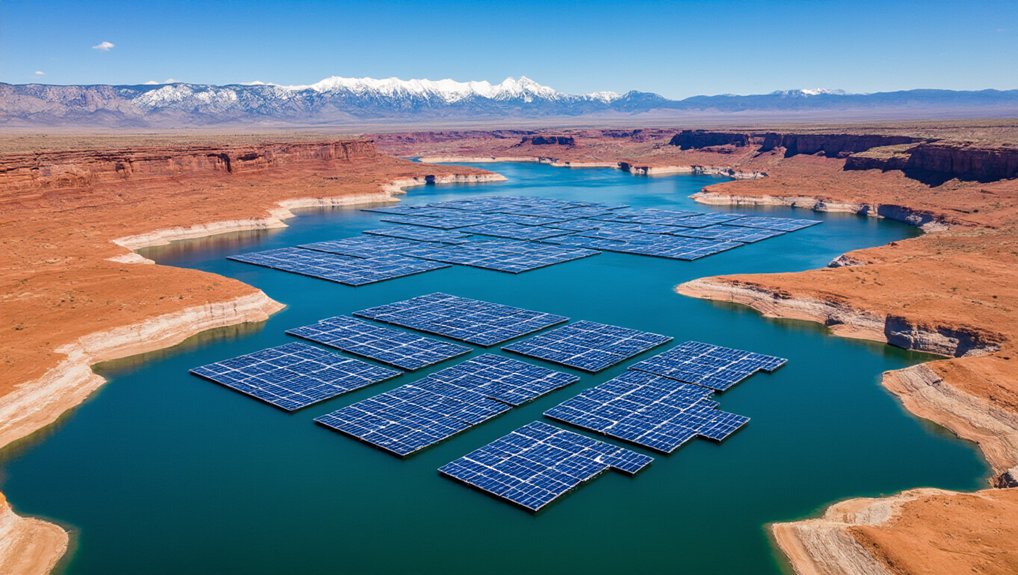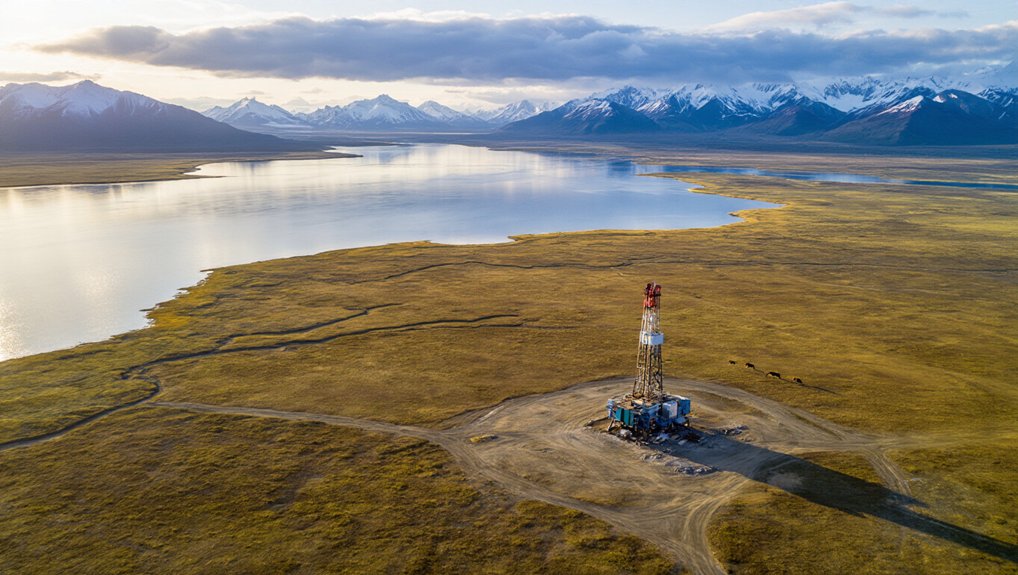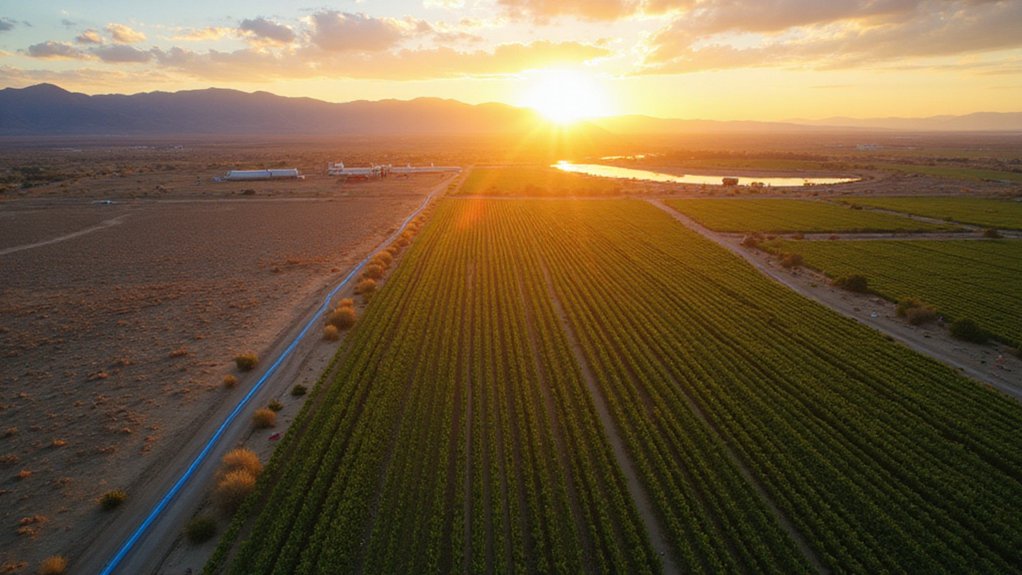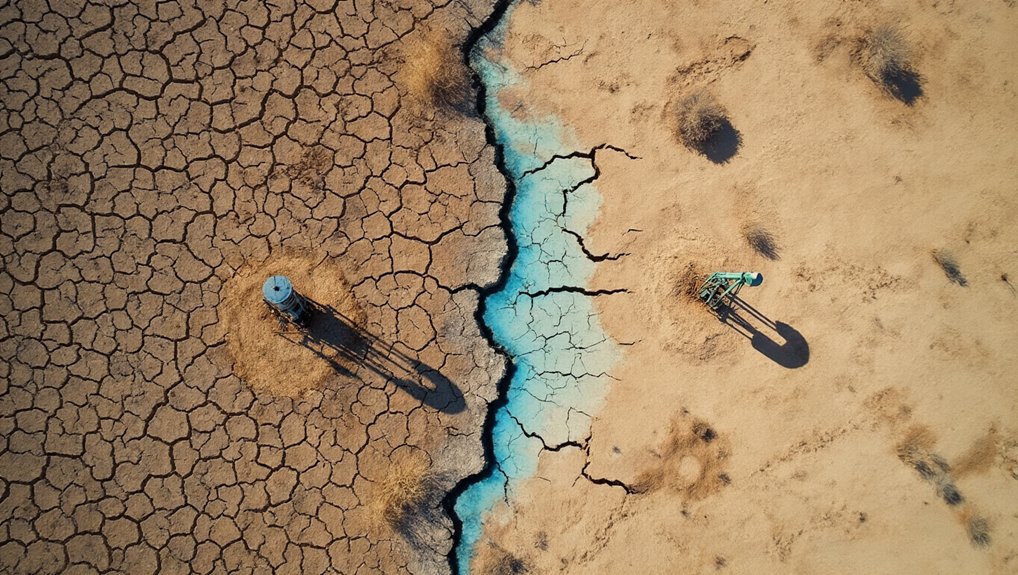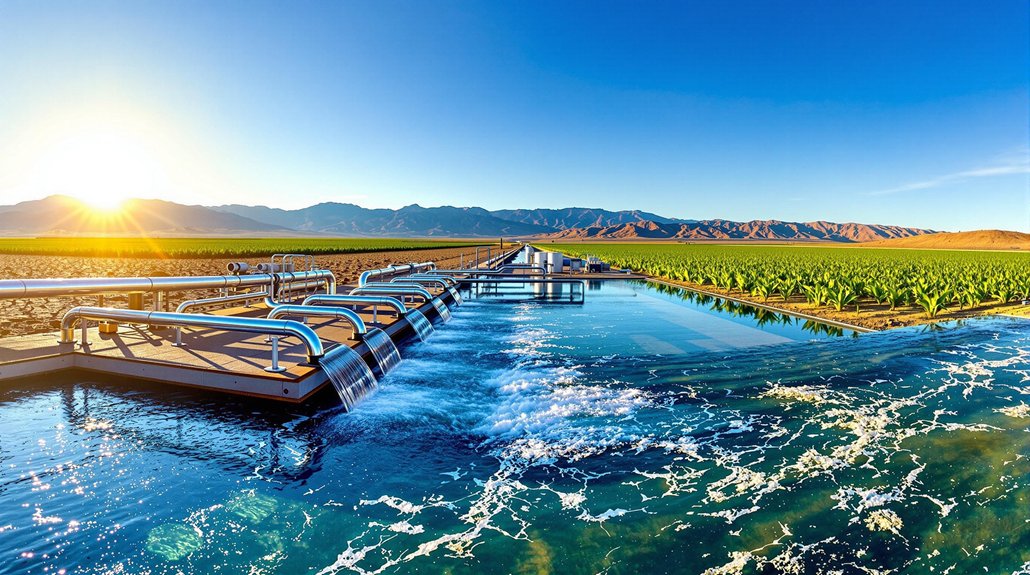While the Colorado River keeps shrinking and politicians keep arguing, someone finally had a decent idea: stick solar panels on the water.
These floating solar arrays, called floatovoltaics, could prevent up to 429,000 acre-feet of water from evaporating annually in Colorado. That’s nearly what every city and town in the state uses combined. Not bad for a bunch of panels bobbing on reservoirs.
The math is stark. About 10% of the Colorado River’s flow vanishes into thin air every year. Colorado’s reservoirs lose over 600,000 acre-feet annually to evaporation, mostly in the hot southern basins where the sun beats down relentlessly. Lake Powell and Lake Mead alone have lost 61% of their storage since 2000, making every drop count.
The same brutal sunshine that steals the water could generate electricity instead. Makes sense, right?
Brutal sunshine stealing water could generate electricity instead. Makes sense.
Floating solar can cut evaporation by up to 90% in dry climates. The panels create shade, blocking the sun’s direct hit on the water surface. Meanwhile, they’re cranking out clean power for the grid. It’s like getting two wins from one investment, which is rare these days.
Colorado has 1,900 reservoirs that could host these systems. The worst evaporation happens in the South Platte and Arkansas basins, where sun and wind team up to suck moisture from every exposed water surface. Perfect spots for floatovoltaics. Small towns are already jumping in – Walden installed 200 panels at its drinking water facility to generate 75 kilowatts of emergency power.
The feds are throwing money at this. The Department of the Interior allocated $19 million in 2024 for solar installations over water bodies and canals. Arizona’s already building them on the Casa Blanca Canal. California’s got projects too.
This isn’t some wild experiment. Australia, Brazil, China, England, India, Japan, and South Korea have all installed floating solar. The technology works. Globally, these systems could save 106 cubic kilometers of water from evaporation each year.
Sure, there are concerns. Nobody wants to ruin fishing spots or mess up lake ecosystems. Beyond environmental impacts, these projects represent a crucial step toward meeting the 1.5°C threshold for limiting global warming that scientists warn is essential for our planet’s future. Environmental groups will scrutinize every project. Recreational users might complain about their view.
But when you’re losing 10% of your river to the sky, maybe it’s time to try something different. The water’s disappearing anyway. Might as well generate some electricity while saving what’s left.
References
- https://coloradosun.com/2025/02/22/colorado-floating-solar-panels-water-supplies/
- https://www.agci.org/research-reviews/more-water-and-more-energy-the-potential-win-win-of-floating-photovoltaics
- https://www.watereducation.org/western-water/solar-paneled-canopies-over-canals-catching-southwest
- https://e360.yale.edu/features/floating_solar_a_win-win_for_drought-stricken_lakes_in_us
- https://www.doi.gov/pressreleases/biden-harris-administration-announces-19-million-investing-america-agenda-innovative
